The Last October Revolution Parade in Moscow, USSR, November 7th, 1990. (Credit: Reddit)
The fear of nuclear war was everywhere in the 1980s, and so much of the music and film of the decade was explicitly about those fears.
1983. Former KGB Director Yuri Andropov was General Secretary of the Communist Party of the Soviet Union. Former actor and Governor of California Ronald Reagan was President of the United States. The Reds thought we were going to attack them. We thought they were going to attack us. President Reagan gave his infamous ‘Evil Empire’ speech that March. The Soviets shot down Korean Air Lines Flight 007 that September with avowed anti-communist United States Representative Larry McDonald of Georgia aboard. Only a few weeks later, Lieutenant Colonel Stanislav Petrov saw NATO missiles heading toward the Soviet Union on a radar screen and chose to call it correctly as a false alarm, narrowly averting a Soviet retaliation which would have spiraled into actual nuclear war. That November, NATO simulated global thermonuclear war, and the Soviets weren’t sure if it was a test.
It should come as no surprise that people were worried about nuclear war in the 1980s. It should also come as no surprise that such fears made their way into movies theaters and recording studios.
Listen for the Sound of the Bomb…Oh Wait
The paranoia surrounding nuclear war was evident nowhere like it was in West Berlin. The divided capital of a divided nation was the point where East met West and would be the site of the first shots fired in the ‘inevitable’ shooting war between the great powers of the 20th century and their allies. It should be noted that West Germany’s capital was actually in Bonn, as West Berlin was surrounded completely by East German territory, but West Berlin was an important part of the West’s cultural strategy during the Cold War as it was a way to show the communists, up close and personal, the success of free market capitalism in the heart of communist territory. Its continued existence was a bane to the East Germans and their Soviet allies. It was this nature of defiance that led to West Berlin becoming a paradise for artists and creatives.
West German band Nena, named after the lead singer’s stage name, had their biggest hit when their song “99 Luftballons” was released in March 1983. Written after a 1982 Rolling Stones concert in West Berlin, the song was inspired by Nena’s guitarist watching the Stones release balloons during the show, and one of them drifting over the Berlin Wall into the East. The song’s German narrative goes that a group of balloons is picked up by nuclear early warning radar as UFOs, generals send pilots to investigate. Finding nothing but balloons, they put on a show of force by blowing up the balloons, which sparks off a nuclear war by nervous nations acting in a panic, destroying the world. The singer walks through a devastated city and finds a balloon before letting it go, and the song ends. The English version, known as “99 Red Balloons,” captures the spirit of the narrative, but dilutes the meaning a bit with the poetic translation of the words, and the band has gone on the record stating they’re dissatisfied with the English translation.
The American Pershing II missiles were developed in the 1970s, and would be stationed throughout Western Europe in the 1980s. It was a point of contention, with protests over their presence in West Germany occurring throughout 1983. The plan to put the Pershing missiles in Germany had caused concern for many people, especially the Soviets. The Pershing missiles being placed in Germany added to the apprehension felt by the leadership of the Soviet Union, believing that the Americans were fully preparing an attack on the USSR and war was imminent. In 1981, the KGB (Committee for State Security, Soviet intelligence and security agency) launched Operation RYAN, an intense intelligence gathering effort designed to determine when NATO was launching nuclear war. At the top levels of the Soviet government, they believed the Able Archer 83 exercise was the cover for such a first strike. The Soviets, in response to NATO forces being placed on heightened alert for simulated reasons, put their own forces on heightened alert for very real reasons. It’s speculated that Able Archer 83 was one of the factors that changed President Reagan’s attitude towards the Soviet Union and the need for tighter arms control.
While “99 Luftballons” was written and released before the nuclear scares of 1983, it exemplified the fears in Germany over nuclear warfare. Germans knew that they would be ground zero for World War III, and those fears permeated throughout German culture for decades. Germany wasn’t the only place touched by fears of nuclear war.
Sting’s 1985 song, “Russians” was inspired by children’s television of all things. When living in New York, Sting would visit his friend, inventor Ken Schaffer. Schaffer had a lab at Columbia where he had developed a device which picked up the satellite broadcasts for Soviet television. Sting and Schaffer would get beers and watch Soviet TV. Sting said in an interview in 2020, “At that time of night we’d only get children’s Russian television, like their Sesame Street. I was impressed with the care and attention they gave to their children’s programmes. I regret our current enemies haven’t got the same ethics.”
Sting’s song was a criticism of the bull-headed mentalities of both world powers during the decades of the Cold War, threatening nuclear annihilation at every turn. Sting’s focus is on the concern which every parent has is keeping their children safe and is hoping that if the rest of the West loves their children as much as he does his son, then hopefully the Soviets love their own children the same way for both sides to be committed to avoiding nuclear war. That idea of the children being the key actually inspired James Cameron to create the central character of Terminator 2: Judgement Day, the ten-year-old John Connor. In Cameron’s words, “The idea of a nuclear war is just so antithetical to life itself.”
The original Terminator touched on fears of technology that were prevalent throughout the 1980s as it became more advanced. Many of those fears would become wrapped up with the fears of nuclear warfare.
Technology High on the Leading Edge of Life
Rush’s 1984 album, Grace Under Pressure, opened with the track, “Distant Early Warning.” The track is about a multitude of things, but calls to mind the Early Warning systems in place on the grounds of all nuclear powers. Technology was everywhere in the 1980s, advancing at rates not seen before because of the impact of computers. According to Neal Peart, Rush’s drummer and lyricist, the track was about the distance that people have from the superpowers and threats of nuclear war, but also how those things are always hanging in the back of everyone’s minds. The early warning systems were satellites, over-the-horizon radars, and other technological advancements that made it easier to warn people an attack was happening. The advancement of technology led to Ronald Reagan launching the Strategic Defense Initiative (SDI), mockingly nicknamed ‘Star Wars’ by its detractors, which was to use satellites with lasers to detect and shoot down nuclear missiles before they could reach the United States, among other things. It was never remotely successful.
However, the idea of technology as related to nuclear weapons was in the minds of everyone due to the hostile rhetoric between the US and Soviet Union, and so Hollywood decided it was a valuable subject matter.
The 1983 film. WarGames, exemplified the paranoia seen during the Able Archer 83 exercises, and the concerns over technology accelerating nuclear war. The premise of the movie is that a young computer hacker accidentally accesses the War Operation Plan Response (WOPR) system, which has been given command of all American nuclear missiles. WOPR continually runs simulations of nuclear war to ensure it is best prepared to respond should the Soviets attack. The young hacker, played by Matthew Broderick, accidentally engages with WOPR and the system runs another simulation believing it to be a real scenario. This causes the North American Aerospace Defense Command (NORAD) staff at the Cheyenne Mountain Complex to believe a real Soviet attack is imminent. The hacker is believed to be a spy, and he is forced to escape and track down the system’s original designer to convince the military that the attack is false. They do so and save the day.
Nuclear missiles don’t work the way they do in the movies. The launch codes are for identifying the President ordering a nuclear launch, not to actually launch the missiles. Missiles are pre-targeted, and the different options a President has for ordering a nuclear strike select the targets by deciding which missiles will be fired. The ‘nuclear football’ that is always with the President has detailed breakdowns of all attack options, and communications equipment for relaying the orders to the nuclear command and control officers within the military, not a computer that picks targets and fires the missiles. Orders are passed down to the missile silos and submarine commanders which are authenticated and double confirmed before both officers prime and launch the missiles. Similar protocols are in place for the bomber crews. The President also does not have the sole authority to launch a nuclear attack, as others are given the ability in case the President is incapacitated or otherwise unreachable. The movies always portray the launch codes as being the actual authentication for missiles to automatically launch, showing the human element as being removed from the process. Ironically, the reason the US military maintained humans in each part of the chain of events is to avoid such a scenario. Hollywood is out to tell a good story, and reality never gets in the way of that.
It makes sense for some of the movies made before the end of the Cold War, seeing as the salient details of the United States’ nuclear strategies were kept closely guarded during the long standoff with the Soviet Union because of the need for secrecy against the great enemy of the time. Therefore, many of these examples are acceptable in their lack of adherence to reality, as filmmakers, songwriters, and authors didn’t often have access to state secrets.
That isn’t to say that WarGames didn’t depict some of the fears of nuclear annihilation pretty well, nor was it supremely far off of the truth. The Americans had developed a system known as the Emergency Rocket Communications System, which was a nuclear missile fitted with a satellite instead of a warhead. The satellite would be shot into orbit and transmit pre-recorded attack orders in the event that the entire high command was unreachable so that a response to a devastating first strike could still be ordered. The Americans didn’t hold a monopoly on a system designed for the worst case scenario either. The Soviet Union developed the “Dead Hand” system. Officially designated as “Perimeter,” this system was an automated response program that would detect if nuclear detonations had occurred on Soviet Soil using seismic, light, radioactivity, and pressure sensors, and send launch command orders to the nuclear attack elements, ensuring a successful response even if the entirety of the upper echelons of Soviet missile command were eliminated. The system is, thankfully, not active all the time, though according to Russian officials, is still in working order and is ready to be switched on should the need arise.
Technical accuracy and the threat of paranoia tripping off these systems made for a very lucrative career for American author and Maryland native son, Tom Clancy. Many of Clancy’s novels deal with the threat of nuclear war, especially the Jack Ryan series. In The Sum of All Fears, a group of Middle Eastern Terrorists arrange events so that the tensions between the United States and the Soviet Union were ratcheted up to the point where both parties were ready to destroy each other. The movie, made in 2001, changed some details and substituted neo-Nazis for the Middle Eastern terrorists, because the filmmakers believed that Middle Eastern terrorists could not successfully pull off such a feat. The movie was shot before the attacks of September 11th, 2001. The novel itself was released in 1991, shortly before the Soviet Union collapsed and the fears of the Cold War with it. However, The Sum of All Fears was not the only Tom Clancy novel about a Cold War gone hot, nor was it the most famous.
Clancy’s debut novel, which starred CIA Analyst Jack Ryan, The Hunt for Red October was written and set in 1984, about a new Soviet nuclear missile submarine with a ‘caterpillar drive’ which made it virtually undetectable by sonar. This meant that the USSR could put nuclear missiles right off the coast of America without the United States knowing until it was too late. The novel follows CIA Analyst Jack Ryan as he is pushed into the field to lead the efforts to locate the Red October, discovering that the Captain, Marko Ramius, is attempting to defect to the West along with his officers. Ryan must convince his superiors and the crew of the USS Dallas attack submarine that Ramius intends to defect and must keep the Red October intact so that it can be studied by the Americans. Matters are complicated by the Soviets realizing the Red October has gone rogue and ordering it to be hunted down and destroyed before it can defect to the West.
The book was well regarded by President Reagan and many members of the White House staff and United States Military and became very popular. It received a film adaptation in 1990 starring Alec Baldwin as Jack Ryan and Sean Connery as Marko Remius. The ironic part is that the movie was released after the end of the Cold War, leading to the addition of the opening text which stated the events took place in 1984, before Gorbachev came to power.
The idea of a silent submarine which could park itself off the coast of major US cities without being discovered was terrifying for several reasons. It would show that the US Navy was unable to keep America safe, which would shake the people’s faith in its government and in the American system. More notably, the idea that nuclear weapons could be right off the coast, impossible to intercept or shoot down, is a horrifying notion. Nuclear submarines are the third leg of the ‘nuclear triad’ which includes missiles and bombers. Submarines are so devastating because they can allow for an immediate response. Launch sites and airbases with nuclear bombers are static targets which can be monitored. They carry larger payloads and can bring more devastation than submarines can, but it is the unpredictability of nuclear submarines which makes them so dangerous. Both the US and USSR developed forces dedicated solely to keeping track of nuclear submarines, often with other submarines, designed to kill them as soon as possible. Mostly, this was accomplished with hunter-killer submarines, but aircraft also played a vital component.
Thusly, the idea of a nuclear submarine which couldn’t be detected by American defense forces was a horrifying thought for most Americans. There would be less of a chance of survival or escape if there was no early warning, just the pop-up of a submarine and an immediate series of missile launches which could flatten entire cities.
It led to people wondering what would happen should the bomb actually go off.
When It All Goes Down
Former Pink Floyd bassist and songwriter Roger Waters has been an avowed and outspoken opponent of nuclear weapons, warfare, and authoritarianism for his entire career. He penned the song, “Two Suns in the Sunset” on his last album with Pink Floyd, entitled The Final Cut, as a “what if” the world lit the fuse on the bomb. The album, released in March 1983, was a direct reaction to Margaret Thatcher’s government, especially the Falklands War. The underlying theme of the album was the abandonment of the post-war dream. Waters believed that the world had lost sight of the promises it made after the end of the Second World War II, especially the promises of not having future conflict. “Two Suns in the Sunset” paints a picture of the moment of the bomb going on with a laid back arrangement driven by simple drums and an acoustic guitar, and a quiet singing voice until the end of the song to drive home the horrors of nuclear war.
In 1987, Waters released his second solo album, Radio K.A.O.S., which was a concept album that followed a British boy named Billy who is disabled but can hear radio waves in his head. When Billy’s brother Benny steals a cordless phone and hides it in Billy’s wheelchair, Billy discovers he can use the phone to communicate. Benny was arrested during the night out after being laid off from the mines when they closed, and Benny’s wife sends Billy to live with his uncle in Los Angeles. Upon arriving in LA, Billy calls into fictional station KAOS1 as he tells his story on air to the host, Jim (played by real life LA Radio DJ Jim Ladd) between songs.
The album’s penultimate song, “Four Minutes” takes place in the supposed four minutes before the impact of nuclear missiles that will destroy the world. During the events of the preceding song, “Home”, Billy hacked into military early warning satellites to trick everyone into thinking they were going to be hit with nuclear armageddon while deactivating their ability to retaliate. As a result of everyone thinking they would die, the album’s final song, “The Tide is Turning” details the world where everyone takes the fears of the end of the world and creates a better one.
By 1987, Mikhail Gorbachev had taken power in the Soviet Union, and nuclear arms reduction treaties were in discussions between Gorbachev and Reagan, which led to the album honoring the fears of nuclear conflict while recognizing the more hopeful attitudes of the latter half of the decade. As the 1980s continued onwards, with Ronald Reagan’s Vice President being elected to President himself in 1988, the Cold War wound down. Arms talks, Mikhail Gorbachev’s policies of cultural reform, and the increasingly poor economy of the Soviet Union meant that tensions with America were eased, and the Soviet leadership was more concerned with preventing the breakup of the USSR. By January 1991, the Soviet Union and the United States were on the same side when the United Nations Security Council voted to send a coalition into Kuwait to chase out Saddam Hussein’s invasion, which was seen as significant with the Soviet Union abandoning its old ally Iraq. By the end of the year, the USSR would cease to exist.
Moving towards a new age would mean that the fears of nuclear war went away by decade’s end, but that didn’t mean Hollywood still didn’t milk it for what it could. By Dawn’s Early Light is a 1990 TV movie based on the 1983 novel Trinity’s Child. The movie follows the events after a rogue Soviet faction launching a false flag attack on the USSR from Turkey to spark off a total nuclear war. The movie follows an American bomber crew tasked with dropping bombs in the Soviet Union, while also following the crew of an airborne Air Force command and control center callsign Looking Glass, and the President’s staff including the Presidential command aircraft, callsign Nightwatch. During the initial Soviet attack, the President is presumed dead, and the Secretary of the Interior is sworn in as the Acting President. As the events unfold, the elected President is found alive, and contacts the Soviet leadership to get a standoff. The Acting President believes his predecessor to be an imposter and orders a full-scale retaliation, but in order to counteract this, the crew of Looking Glass crashes into Nightwatch to stop the orders from being transmitted.
The movie was made to cash in on the last of the Cold War paranoia, despite the novel’s timely presence during the height of Cold War tensions. In a similar vein to The Hunt for Red October, By Dawn’s Early Light was slightly affected by being made after the highest of nuclear tensions had been relaxed.
The 1983 television film, The Day After, may be one of the most impactful examples because it looked at what happens next. The movie painted a picture of what life would look like in the wake of nuclear war. It followed families as they tried to survive in an irradiated and devastated landscape afterwards. It was incredibly successful and remains highly regarded. The film ended with a direct textual address to the audience, telling them that the events of an actual nuclear war would be severely worse, and called on everyone to prevent such an event from happening. In 1987, the film was broadcast on Soviet television, which was a tremendous demonstration as to how frightening the possibility of war on both sides was, and how dedicated both societies were at solidifying the arms reduction treaties they were negotiating about during that time.
The World Still Turns
The 1980s saw such an upturn in the fears over nuclear warfare, and open conflict with the Soviets, because of the death of Leonid Brezhnev, the longtime leader of the Soviet Union who operated under a policy of détente with the West. Brezhnev was succeeded by Yuri Andropov, longtime head of the KGB and a notorious hardliner, who felt that the West was the great enemy. Andropov was only the General Secretary of the Communist Party for about fourteen months until his death, after which he was succeeded by Konstantin Chernenko, who was only General Secretary for about thirteen months and spent most of his premiership in the hospital. As a result of Chernenko’s ill health, many of the hardliners were able to run the show in absence of direct leadership, and it was only when Mikhail Gorbachev ascended to the post after Chernenko’s death because the Soviet Politburo wanted a younger leader that the Soviet Union’s affinity for authoritarianism and hostility towards the west began to wane.
At the same time, Ronald Reagan ran for President of the United States against incumbent Jimmy Carter and won. Reagan ran as a strong anti-communist and treated the Soviet Union as the greatest threat to America. The Soviet invasion of Afghanistan painted the USSR as an aggressive and uncompromising power, which serviced Reagan’s views well. It was only the middle of the decade, after the heightened tensions of 1983, and the ascension of Gorbachev in 1985 that Reagan rethought his position and sought rapprochement with the Soviet Union, a sentiment which Gorbachev shared. Gorbachev’s internal reforms led to the dissolution of the Soviet Union.
As a result, the prevailing thought process of America in the 90s and 2000s was that Russia was going to become a newfound ally. This was reflected in the movies of the time. In the 2002 movie of The Sum of All Fears, the Russian government is amenable to the West, and beset by rogue, hardliner elements which help cause the problems. Most of the times Russians were enemies in movies at that time were rogue elements or criminals. It wouldn’t be until Vladimir Putin became openly hostile with the West and started the illegal invasion of Ukraine in 2014 with unmarked forces before the open warfare starting in 2022 that Russia as a whole would be seen as the enemy again.
The nervousness of nuclear warfare is creeping its way back into society’s concerns, but the peaceful end of the Cold War, the subsequent disarming of the major nuclear powers, and the increased focus on diplomacy since then are giving us hope that peace may continue to win.
The world is imperfect as it always has been, but it still continues to turn.
- There is a real station with the call letters KAOS. It is a hybrid community-college radio station licensed to The Evergreen State College in Olympia, Washington ↩︎
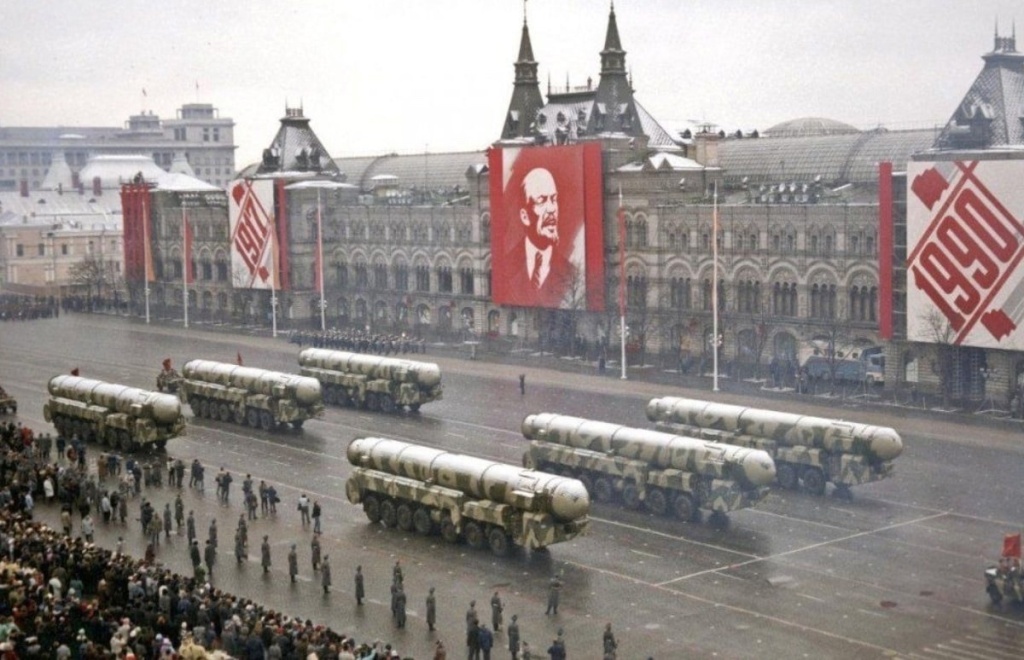
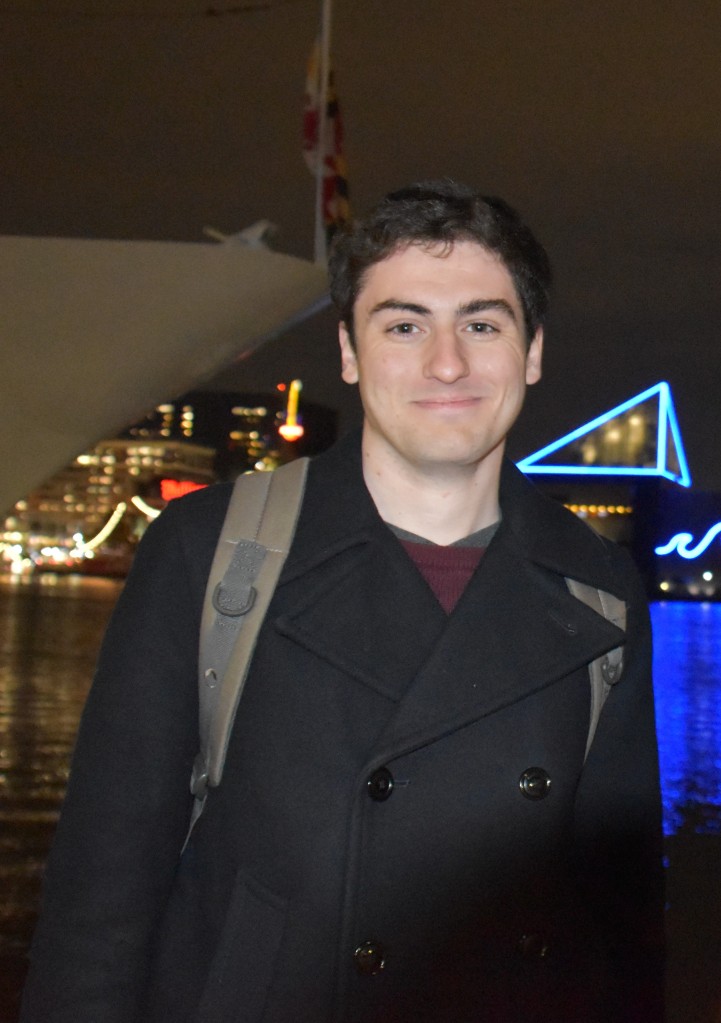
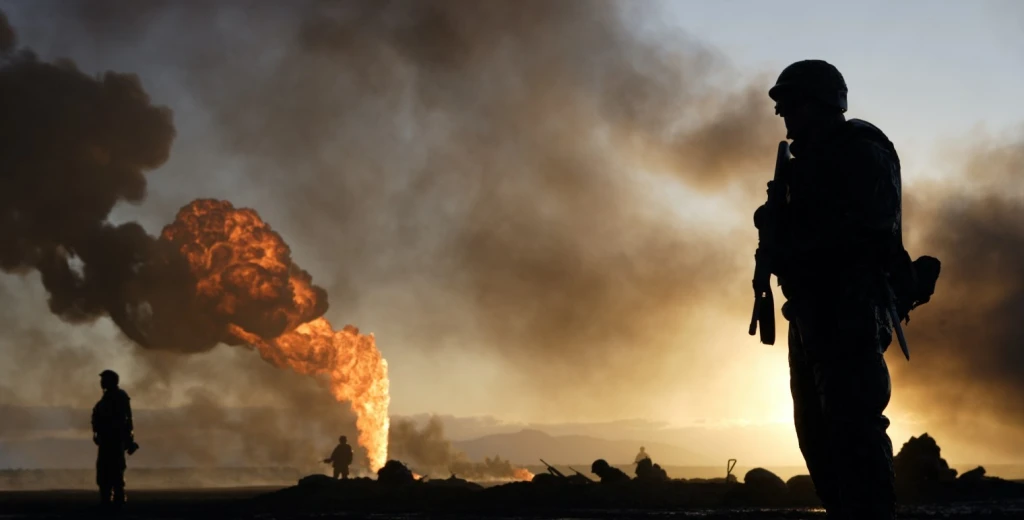

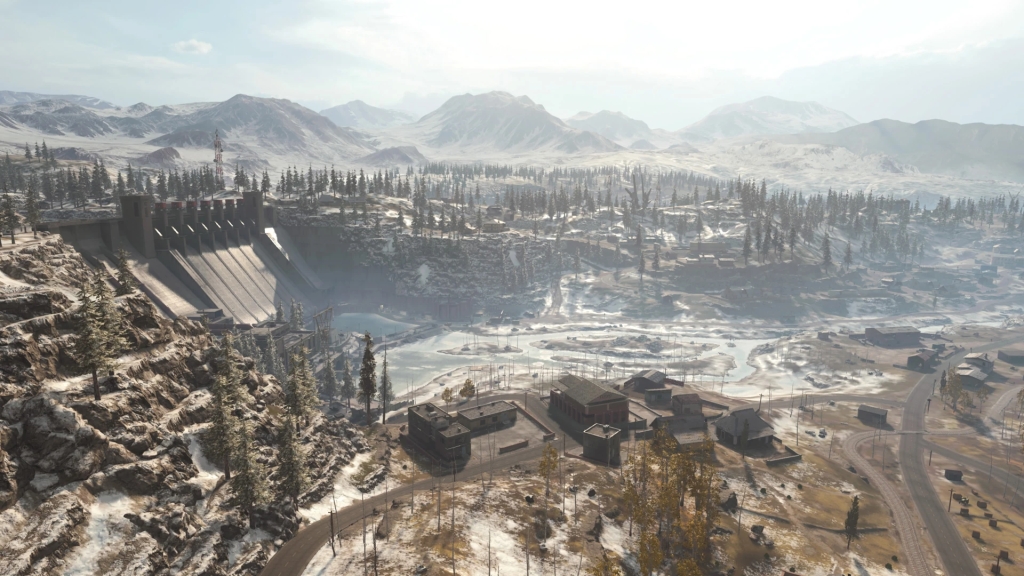
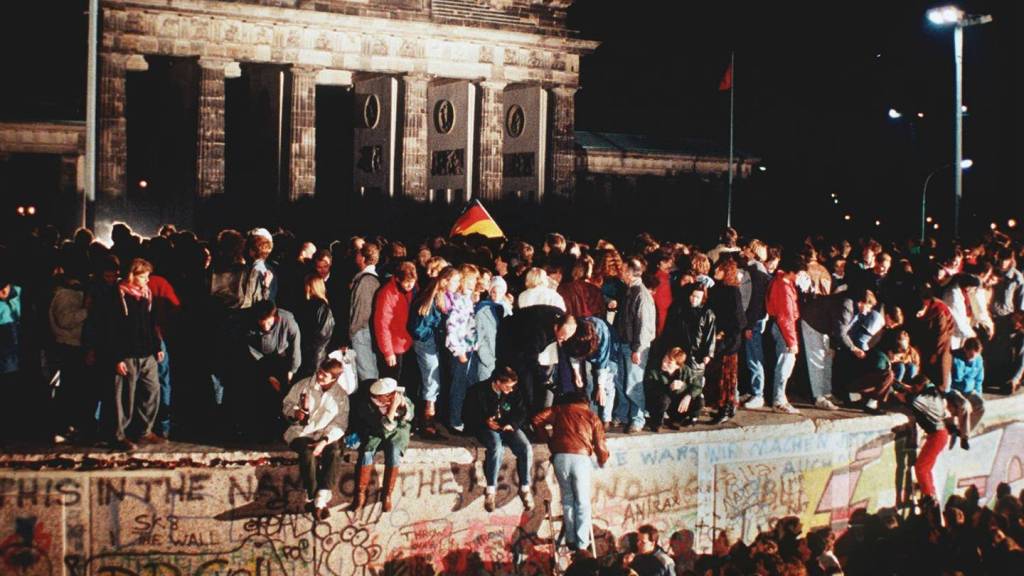

Leave a comment